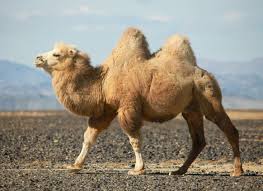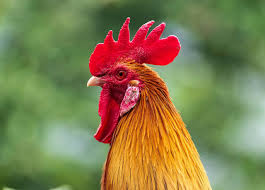Toltrazuril (Clear Solution)
Brand Name:
Toltrazuril (Clear Solution)
Indications & Uses:
Parasites
Dosage Forms:
Liquid Solution
Name:
Toltrazuril (Clear Solution)
Common Capacity:
100ml, 250ml, 500ml, 1000ml (1L) [Depending on concentration and manufacturer]
Applicable Animals:
Global Livestock Application:
- Poultry: Broilers, Layers, Breeders (Chicks and Growers), Turkeys, Ducks, Geese, Quails, Pheasants
- Swine: Piglets
- Ruminants: Calves, Lambs, Goat Kids
- Rabbits
Dosage and Administration:
Administer orally via drinking water (for poultry) or individually (for piglets, calves, lambs, goat kids, rabbits). The concentration of the solution will dictate the volume per dose. Common concentrations include 2.5% and 5% Toltrazuril solutions.
- Poultry (Broilers, Layers, Breeders, Turkeys, Ducks, Geese, Quails, Pheasants):
- Prophylactic/Treatment for Coccidiosis:
- 2.5% Solution: Typically 7 mg to 25 mg of Toltrazuril per kg body weight over 2 days. This is most commonly achieved by administering 25 ppm (25 mg/L) in drinking water for 48 hours continuously, or 75 ppm for 8 hours on 2 consecutive days.
- Calculation Example (for 2.5% solution to achieve 25 ppm): Add 1 liter of 2.5% Toltrazuril solution per 1000 liters of drinking water (25000 mg / 1000L = 25 mg/L).
- Alternatively, some protocols use a total dose of 7 mg/kg body weight given over 24-48 hours. Ensure the entire flock consumes the medicated water.
- Treat during periods of expected coccidiosis challenge or upon diagnosis.
- Prophylactic/Treatment for Coccidiosis:
- Piglets:
- Prophylactic/Treatment for Neonatal Isosporosis (Isospora suis):
- 5% Solution: A single oral dose of 20 mg Toltrazuril per kg body weight.
- Calculation Example (for 5% solution): Administer 0.4 ml of 5% solution per kg body weight.
- Most commonly given to piglets at 3-5 days of age. This single dose effectively controls the infection.
- Prophylactic/Treatment for Neonatal Isosporosis (Isospora suis):
- Calves:
- Prophylactic/Treatment for Coccidiosis (Eimeria species):
- 5% Solution: A single oral dose of 15 mg Toltrazuril per kg body weight.
- Calculation Example (for 5% solution): Administer 0.3 ml of 5% solution per kg body weight.
- Given once to calves at 3-6 weeks of age, or around stress periods like weaning or relocation.
- Prophylactic/Treatment for Coccidiosis (Eimeria species):
- Lambs and Goat Kids:
- Prophylactic/Treatment for Coccidiosis (Eimeria species):
- 5% Solution: A single oral dose of 20 mg Toltrazuril per kg body weight.
- Calculation Example (for 5% solution): Administer 0.4 ml of 5% solution per kg body weight.
- Given once at 3-6 weeks of age, or during periods of risk.
- Prophylactic/Treatment for Coccidiosis (Eimeria species):
- Rabbits:
- Prophylactic/Treatment for Hepatic and Intestinal Coccidiosis:
- 2.5% Solution: 25 mg Toltrazuril per kg body weight daily for 2 consecutive days.
- Calculation Example (for 2.5% solution): Administer 1 ml of 2.5% solution per kg body weight daily for 2 days.
- Administer individually or in drinking water if using a lower concentration for longer periods.
- Prophylactic/Treatment for Hepatic and Intestinal Coccidiosis:
Accurate body weight assessment is crucial for individual dosing. When administering via drinking water, calculate water consumption to ensure target dose intake.
Applicable Diseases and Symptoms:
- Coccidiosis: Caused by various Eimeria species or Isospora suis. Toltrazuril is a triazinone derivative effective against all intracellular developmental stages of coccidia (schizonts, gamonts, and oocysts).
- Symptoms:
- Poultry: Diarrhea (watery, mucous, or hemorrhagic), ruffled feathers, poor growth, decreased feed intake, dehydration, increased mortality.
- Piglets: Yellowish to grayish pasty diarrhea, often with blood or mucus, dehydration, rough hair coat, reduced growth rate (stunting), increased susceptibility to other infections.
- Calves, Lambs, Goat Kids: Diarrhea (often bloody or dark), listlessness, anorexia, weight loss, abdominal pain, fever, dehydration, poor performance.
- Rabbits: Diarrhea, poor growth, swollen abdomen, liver lesions (hepatic form), high mortality in young animals.
Precautions:
- General: For veterinary use only. Not for human consumption.
- Dosage: Do not exceed the recommended dose. Overdosing, especially in poultry, may lead to adverse effects (e.g., severe intestinal damage with delayed growth or even mortality at extremely high doses).
- Resistance: Improper use (e.g., underdosing or too frequent use) may lead to the development of drug resistance. Use as part of an integrated coccidiosis control program. Avoid continuous use in flock/herd unless directed by a veterinarian.
- Preparation: Prepare fresh medicated water daily. Ensure the solution is well mixed. Solutions can settle; re-mix as needed.
- Storage: Store in a cool, dry place, away from direct sunlight. Keep out of reach of children.
- Handling: Wear protective gloves and eyewear when handling the concentrated solution. Wash hands thoroughly after handling.
- Interactions: Avoid co-administration with other anticoccidials unless otherwise specified by a veterinarian.
- Water Quality: Use clean, potable water for preparing medicated solutions.
Contraindications:
- Do not use in animals with known hypersensitivity to toltrazuril.
- Not intended for use in laying hens producing eggs for human consumption (due to potential residues and egg withdrawal periods).
- Not intended for use in lactating animals producing milk for human consumption.
- Do not use in severely liver- or kidney-compromised animals.
- Do not use in adult breeding animals, especially poultry and swine, unless specifically indicated for certain specific stages/diseases and with careful consideration of withdrawal periods.
Post-Treatment Care:
- Hygiene and Biosecurity: Implement strict hygiene measures in animal housing to reduce the environmental burden of oocysts. Regular cleaning, disinfection, and proper litter management are crucial.
- Nutritional Support: Ensure animals have access to adequate nutrition and clean water to support recovery and compensatory growth.
- Environmental Management: Optimize environmental conditions (temperature, ventilation, humidity) to reduce stress and prevent re-infection.
- Monitoring: Monitor animals for clinical signs of re-infection and consider conducting follow-up fecal examinations to assess treatment efficacy and detect potential resistance.
- Rotation: For long-term control, consider rotating toltrazuril with other anticoccidials or different management strategies to prevent resistance development.
- Veterinary Consultation: Consult a veterinarian for persistent or recurring coccidiosis problems to re-evaluate the control program.
Applicable Animals
Animal species suitable for this veterinary medication



